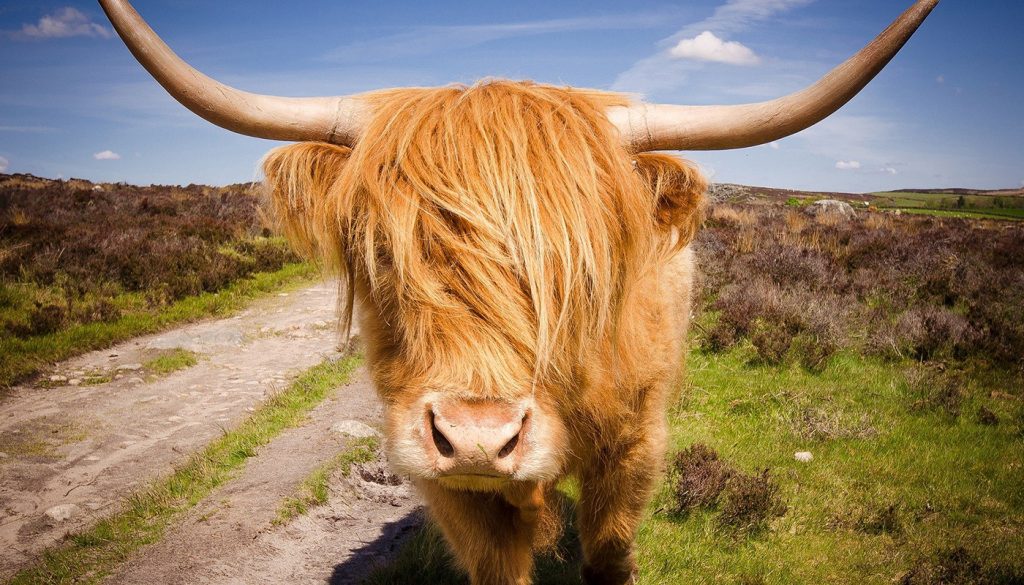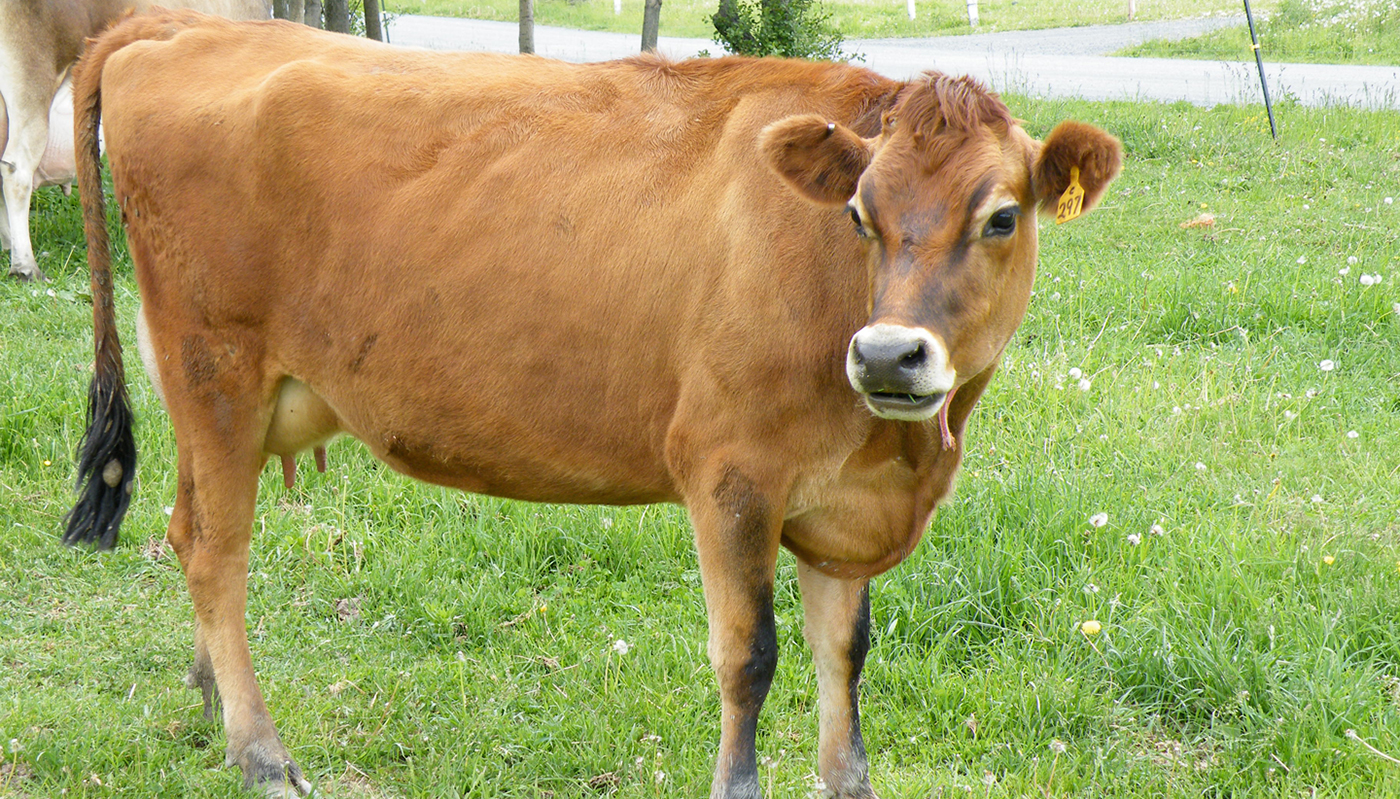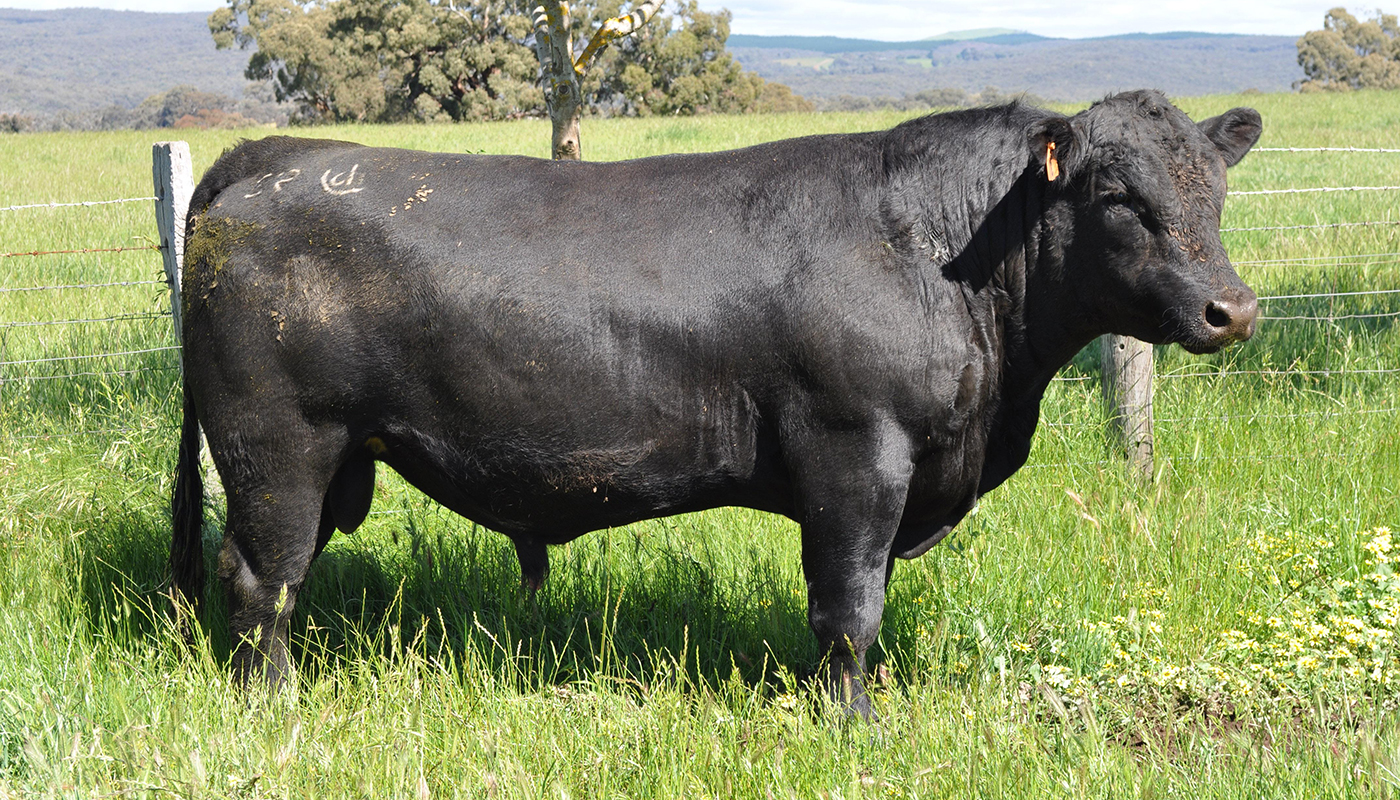
The Highland cattle breed is one of the oldest registered cattle breeds that originate from Scotland.
They are a fairly large breed which is quite a common sight in the Scottish countryside. Big fluff balls of a cow that look like stuffed teddy bears that are often seen grazing happily on steep slopes. They are well known for their long hair complete with fringe that almost if not completely covers their eyes. They have the cutest little calves with tufts of shaggy hair that tends to stand up all over the place.
HIGHLAND BREED OF CATTLE QUICK PROFILE OVERVIEW
|
|
|---|---|
| Highland cattle tend to be the teddy bears of cows with their thick long shaggy coat of hair | |
| Country of Origin: | Scotland |
| Other Names: | Kyloe, Scotch Highland Cattle, Hairy Cow and Scottish Highland Cattle |
| Main Purpose: | Beef |
| You may Also Like: | 35 Best Cattle Breeds for Milk – Dairy Cattle |
| You may Also Like: | 47 Best Cattle Breeds for Meat – Beef Cattle |
| Can be used for | Breed, Meat |
| Ideal Climate: | Heat, Cold, Most Climates |
| Conservation Status: |
Listed by the *ALC Status/Rarity: Recovering |
| Health Issues? | No known health issues |
| Good Starter Cattle? | Novice to intermediate Cattle farmer/keeper level |
| Cattle Associations: | Highland Cattle Society, American Highland Cattle Association, North Central Highland Cattle Association, and Northwest Highland Cattle Association |
| Cattle Clubs: | Please refer to the Highland Cattle Society, American Highland Cattle Association, North Central Highland Cattle Association, and Northwest Highland Cattle Association for more information on the Highland cattle breed. |
| Where to buy them? | Please refer to the Highland Cattle Society, American Highland Cattle Association, North Central Highland Cattle Association, and Northwest Highland Cattle Association for more information on the Highland cattle breed. |
| Child Friendly? | Livestock should not be left unattended around unsupervised children |
| General Information: | Highland cattle breed is thought to live longer and produce more calves than most other cattle breeds. They are native to the areas in Scotland that are close to the Arctic circle and thus have adapted to the harsh climates and environments that occur that close to the Arctic. They are also fully adept at wondering the mountainous regions of Scotland happily climbing the and or grazing on the steep slopes as if they were flat ground. Not many if any other cattle breeds have a coat quite like the Highland Cattle breeds coat. It consists of a few layers with the outer layer being long, coarse hair. The inner layer consists of a shorter softer and more woolly type hair. Their double coat protects them against the high rainfall, strong winds, and the icy cold by acting as a natural insulator. They have a long fringe that covers their eyes and is called a ‘dossan’. The fringe helps to protect their eyes against the harsh elements. The meat of the Highland cattle breed tends to be a lot leaner as they do not put on extra layers of fat as they have a thick coat to protect them. They also do not increase their feed intake until the temperature drops to well below -18 degrees F. Other breeds have been noted to increase their feed intake at temperatures of around 32 degrees F. They have been known to get to running speeds of up to 40 km/h and they usually live from between 15 to 22 years of age. |
| Note: *ALC stands for American Livestock Conservancy | |
PHYSICAL CHARACTERISTICS |
||||||||||||||||||||||||||||||||
|---|---|---|---|---|---|---|---|---|---|---|---|---|---|---|---|---|---|---|---|---|---|---|---|---|---|---|---|---|---|---|---|---|
| Scottish Highland cattle have to be one of my most favorite breeds. When I was traveling the Scottish Highlands, I had to stop and get out to get to get a look at them. I was, of course, just lazily started at while they continued to munch away on their food. They are a wonderful breed that has long wavy or some might say shaggy hair, appear quite thick of girth so tend to be more rounded in figure than the normal blocky cattle figure. They have medium round faces with their eye covered by a fringe and their ears are fluffy and of medium size. They have medium length sturdy legs that are sometimes covered in their shaggy fur. | ||||||||||||||||||||||||||||||||
| Size: | Medium | |||||||||||||||||||||||||||||||
|
||||||||||||||||||||||||||||||||
COW BREEDING & MILKING INFORMATION |
|
|---|---|
| Most Cattle produce milk but not all of them are used in the dairy Cattle capacity for their milk. Cows only calve once a year and should have 12 to 14-month inter-calving cycle. They are not used as a dairy cow, but their milk is high in butterfat and very nutritious for their young. They have high fertility, birth with ease and regularly with little to no birthing problems. They are an excellent mother with good maternal instincts and are quite protective of their babies. | |
| Breeding Period/cycle: | Usually lasts 6 to 24 hours Most ave. 12 to 16 hours Cows usually come on heat every 21 days. |
| Estrous cycle: | Ave. 17 days to 24 days Heifer – usually ave. 20 days Cows – usually ave. 21 days |
| Gestation Period: | Usually, around 279 to 287 days but most gestation is 283 days. Cows that are carrying bull calf’s their gestation period is usually a little longer than cows that are carrying heifer calves. |
| No. Calves/Litter: | 1 calf at a time. Cows rarely have twins or triplets, but it can happen |
| Lactation Period: | Cows lactation period can last for up to about 10 months (305) days. |
| Milking From: | 1 to 6 weeks after Calving |
| Drying off Period: | The cow should have a 12 to 14-month inter-calving cycle. Drying off period for around 60 days before she can calve again. |
| Milk Quality: | Good |
| Milk Ideal for: | Calves |
| You may Also Like: | 35 Best Cattle Breeds for Milk – Dairy Cattle |
CATTLE MEAT PRODUCTION INFORMATION |
||||||||
|---|---|---|---|---|---|---|---|---|
| Highland beef is slow maturing cattle thus they make for premium beef which is well marbled, low in fat and cholesterol and is lean and very tender. Criteria which is very much in demand in today’s market place. | ||||||||
| Meat Production? | N/A | |||||||
|
||||||||
| You may Also Like: | 47 Best Cattle Breeds for Meat – Beef Cattle | |||||||
CATTLE SKIN PRODUCTION INFORMATION |
||||||||
|---|---|---|---|---|---|---|---|---|
| Most meat Cattle will have a skin by-product, and these are usually used in some form or just as a hide. Their hides have been to known to produce top quality sought after goods./td> | ||||||||
| Skin Production? | Yes, Quality: Top quality | |||||||
| Skin is used to Produce: | Calf/cow skin leather products such as shoes, car seats, fine leather coats, gloves, handbags, belts, furniture, rugs, etc. | |||||||
|
||||||||
HISTORY
The Highland cattle breeds early history is a bit lost in time and as such quite spotty in places. There are records of the breed being improved upon in the 1800s. The improvement on the breed was made solely by selection and no other breed was introduced to the bloodline.
They were kept on small islands close to the Highlands and in the Highlands too. The breed is sometimes called Kyloes as in order to get to the market places the breed would have to be herded across the straits or Kyloes. The breed became really popular in the UK with the first breed herd book being established in England in 1884.
In the 1880s Highland cattle were imported to America for the first time. Importations to America of the Highland cattle breed continued through the 1900s with the breed having a small loyal following of American and or Canadian breeders/farmers.
The breed popularity is once again on the rise as farmers are seeing how economical this breed is. They are great foragers and love to east various weeds or noxious plants. They are being used to manage and diversify marginal lands without the negative impact that most other heavier breeds are known to cause.
With today’s consumer’s demands for a leaner beef lower in fats and cholesterol you cannot get a much better meat that the Highland cattle breed.
Video
USEFUL LINKS
- Purebred Dairy Cattle Association
- American Dairy Association
- National Association of Animal Breeders
- American Dairy Science Association
- United States Cattlemen’s Association
- National Cattlemen’s Beef Association
- American National Cattlewomen
- Beef Cattle Breed Associations
- National Cattlemen’s Beef Association
- Fur Commission USA
- North American Meat Institute
- American Livestock Conservancy
- Animal Shelter (ASPCA)
- American Veterinary Medical Association
- American Animal Welfare Society
- American Animal Control
- American Society of Animal Science
- United States Department of Agriculture
 Hereford Cattle Breed – Everything You Need to Know
Hereford Cattle Breed – Everything You Need to Know Nguni Cattle Breed – Everything You Need to Know
Nguni Cattle Breed – Everything You Need to Know Jersey Cattle Breed – Everything You Need to Know
Jersey Cattle Breed – Everything You Need to Know Fleckvieh Cattle Breed – Everything You Need to Know
Fleckvieh Cattle Breed – Everything You Need to Know Sahiwal Cattle Breed – Everything You Need to Know
Sahiwal Cattle Breed – Everything You Need to Know Welsh Black Cattle Breed – Everything You Need to Know
Welsh Black Cattle Breed – Everything You Need to Know Boran Cattle Breed – Everything You Need to Know
Boran Cattle Breed – Everything You Need to Know Vechur Cattle Breed – Everything You Need to Know
Vechur Cattle Breed – Everything You Need to Know Agerolese Cattle Breed – Everything You Need to Know
Agerolese Cattle Breed – Everything You Need to Know Alambadi Cattle Breed – Everything You Need to Know
Alambadi Cattle Breed – Everything You Need to Know Angus Cattle Breed – Everything You Need to Know
Angus Cattle Breed – Everything You Need to Know Afrikaner Cattle Breed – Everything You Need to Know
Afrikaner Cattle Breed – Everything You Need to Know